From my understanding of the algorithm, IDDFS (iterative-deepening depth-first search) is simply a depth-first search performed multiple times, deepening the level of nodes searched at each iteration. Therefore, the memory requirements are the same as depth-first search because the maximum depth iteration is just the full depth-first search.
Therefore, for the example of the tree you gave, the first iteration would visit node A, the second iteration would visit nodes A, B, and C, and the third iteration would visit all of the nodes of the tree.
The reason it is implemented like this is so that, if the search has a time constraint, then the algorithm will at least have some idea of what a "good scoring" node is if it reaches the time-limit before doing a full traversal of the tree.
This is different than a breadth-first search because at each iteration, the nodes are visited just like they would be in a depth-first search, not like in a breadth-first search. Typically, IDDFS algorithms would probably store the "best scoring" node found from each iteration.
